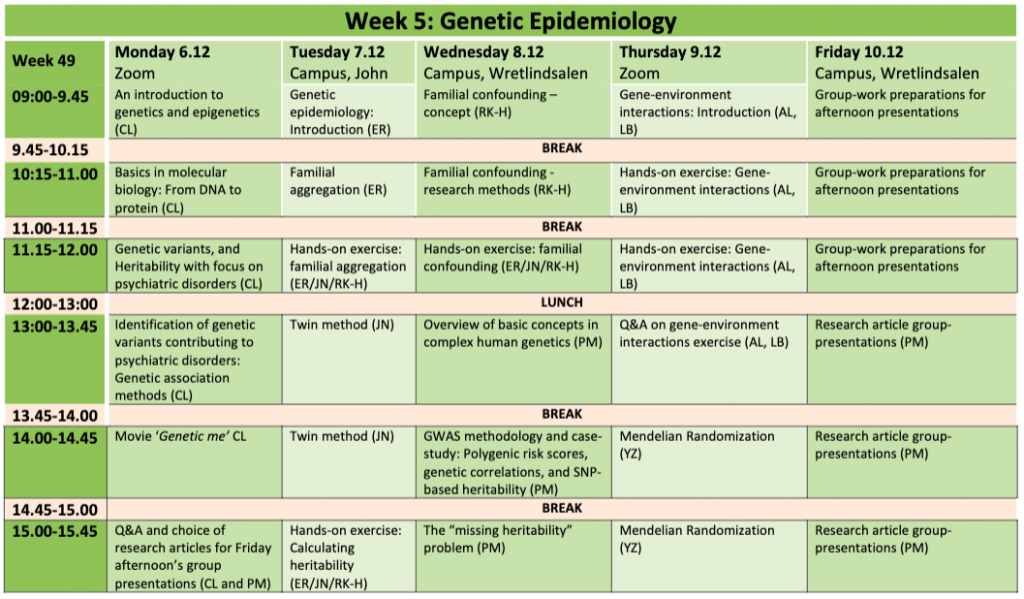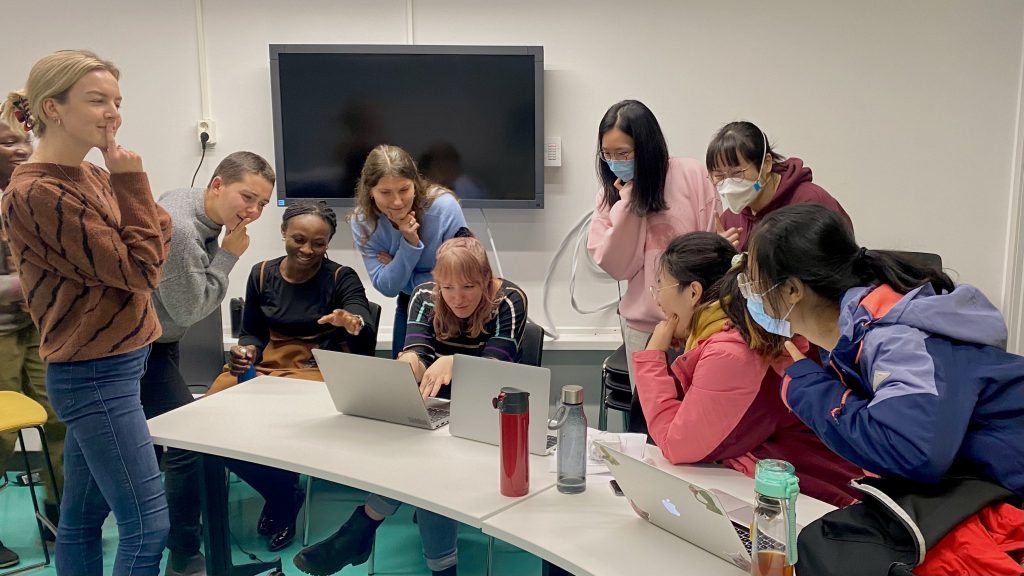
My experience of Applied Epidemiology 2
Teachers
The course leader was Yajun Liang and she facilitated the course and the final examination. Throughout the course, we had many guest lectors who taught us different areas of epidemiology and their latest research projects.
Course Themes
We have learned different topics every week. The main themes were:
- Cardiovascular epidemiology: Generalized estimating equation (GEE) model, Latent class growth model (LCGM), case-crossover study
- Psychiatric epidemiology: depression, anxiety, measurement of study exposures, Problems in studies of mental health and sexual and reproductive health
- Cancer epidemiology: lung cancer and smoking, breast cancer, survival analysis, measure in cancer epidemiology
- Geriatric epidemiology: dementia, multimorbidity, SNAC-K (large geriatric cohort)
- Genetic epidemiology: basics in molecular biology, genetic association methods, familial confounding, Mendelian randomization, Twin study
- Social epidemiology: social determinants of health, social capital, measuring inequalities
Course Schedule
This was a 10-week course mixed with online and campus teaching. We had the first 3 weeks before the previous course (Epidemiological Methods for Outcome Evaluation of Public Health Interventions) and continued when the course ended. It was a bit difficult to catch up on the course topics in week 4, but we did manage in the end. Most days lectures were scheduled from 9:00 to 15:45.

Assignments
Every week, we had an assignment or quizzes focused on the different areas of epidemiology. It was helpful to know what I didn’t understand and review the course materials once again. One of my favorite assignments was from the second week, psychiatric epidemiology. We were given a small dataset and asked to write a small report with background, methods, results, and discussions. To be honest, we were confused at the beginning because it has been a while since we used STATA in the second biostatistics course. You can see our struggle below? But in the end it was great practice for the thesis project!

Group Work
We also had weekly group work or presentations, such as designing research related to the topic of the week, summarizing research papers, and presenting the epidemiology of specific diseases. It was quite busy working on the group work and individual assignment/quiz at the end of the week but was interesting to listen to other groups’ presentations.
Exam
The examination task was to design a study protocol in the relation to the areas of epidemiology in the course and present it in the class. We had to integrate all the knowledge, touch upon the methods and research techniques, and write them down in the protocol.
Finally
The most interesting part of the course was to learn many different areas of epidemiology and interact with researchers. I really enjoyed learning different research methods which haven’t been covered in other courses.
The only concern was that the course was scheduled late. It would have been more helpful to find a thesis project and supervisors if this course was held earlier in the semester.
I hope this review helped you to get to know about our program. Feel free to contact me if you have any kind of questions! Arigato ?
Sakura
Featured image by Marvin Meyer on Unsplash
Sakura Sakakibara - Public Health (Epidemiology)
Hej! I am Sakura, a nurse as well as a public health nurse from Japan. I am a master student of Public Health Epidemiology and also a new blogger at KI. I love watching formula races and hiking. I look forward to sharing my experience with you here!

0 comments